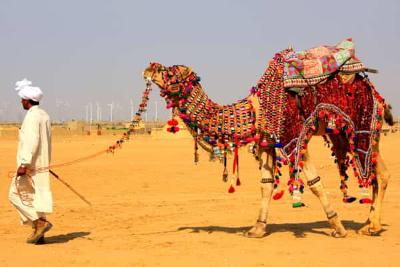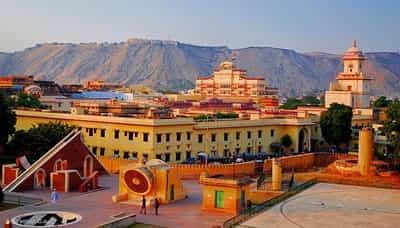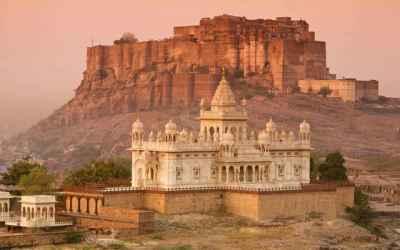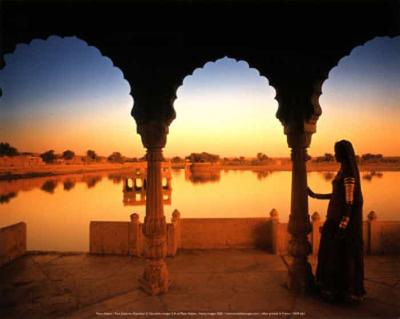Chittorgarh: A Monumental Tale of Bravery and Sacrifice
Chittorgarh: A Monumental Tale of Bravery and Sacrifice
India, a land of rich history and culture, is filled with countless stories of heroism and valor. One such tale is that of Chittorgarh, a city located in the state of Rajasthan. Known for its magnificent fort and the tales of bravery and sacrifice associated with it, Chittorgarh is a must-visit destination for history enthusiasts and those seeking to explore the glorious past of India.
The City of Chittorgarh
Chittorgarh, also known as Chittaur, is an ancient city that boasts a glorious history dating back to the 7th century AD. The city is most famous for its majestic Chittorgarh Fort, which is the largest fort in India and a UNESCO World Heritage Site. Spread over an area of 700 acres, the fort stands proudly on a hilltop and offers breathtaking views of the surrounding landscape.
Chittorgarh was once the capital of the Mewar dynasty and served as a symbol of Rajput pride and valor. The city has witnessed countless battles and sieges throughout its history, making it a significant landmark in Indian history.
The Magnificent Chittorgarh Fort
The Chittorgarh Fort is an architectural marvel that showcases the grandeur and splendor of Rajputana architecture. The fort is a complex of several palaces, temples, towers, and reservoirs, each narrating a story of its own.
Kirti Stambh (Tower of Fame): This 12th-century tower stands tall at a height of 22 meters and is dedicated to Adinath, the first Jain Tirthankara. The tower is adorned with intricate carvings and sculptures, displaying the fine craftsmanship of the artisans of that era.
Vijay Stambh (Tower of Victory): Built in the 15th century by Maharana Kumbha, this tower commemorates his victory over the combined forces of Malwa and Gujarat. The 37-meter high tower boasts exquisite carvings and has a spiral staircase leading to the top, offering panoramic views of the fort and the city.
Rana Kumbha Palace: This palace is the largest structure within the fort complex and was the residence of the legendary ruler, Rana Kumbha. Though now in ruins, the palace still reflects the grandeur of the bygone era with its intricately carved pillars and balconies.
Padmini Palace: This palace is closely associated with the legendary queen, Rani Padmini, known for her exceptional beauty and bravery. The palace features a mirror room where the queen was said to have sat while Alauddin Khilji caught a glimpse of her reflection, leading to the infamous siege of Chittorgarh.
The Saga of Bravery and Sacrifice
Chittorgarh is synonymous with the tales of bravery and sacrifice exhibited by its renowned Rajput rulers and warriors. The city witnessed three major sieges, which have become legendary in Indian history.
Siege by Alauddin Khilji: In 1303, the fort was besieged by Alauddin Khilji, the ruler of the Delhi Sultanate. The Rajput warriors fought fiercely and refused to surrender. The women of the fort, led by Rani Padmini, performed jauhar (self-immolation) to protect their honor, while the men fought until death. This act of sacrifice and bravery has become a defining moment in the history of Chittorgarh.
Siege by Bahadur Shah of Gujarat: In 1535, the fort faced another invasion under the command of Bahadur Shah, the ruler of Gujarat. Once again, the Rajputs displayed their valor and fought till the end to defend their homeland. The women of the fort performed jauhar, refusing to succumb to the enemy's demands.
Siege by Emperor Akbar: The third and final siege on Chittorgarh took place in 1567, when Emperor Akbar led the Mughal forces against the fort. This time, the Rajput forces, led by Maharana Udai Singh, decided to fight back instead of surrendering. Though outnumbered and outgunned, they held their ground, displaying immense courage and valor. Ultimately, when defeat seemed inevitable, the women performed jauhar, and the men went out fighting till their last breath.
Exploring Chittorgarh
Aside from its magnificent fort, Chittorgarh offers several other attractions that give visitors an insight into its glorious past.
Temples: Chittorgarh is home to various historical temples that are worth exploring. The Kalika Mata Temple, the Meera Temple, and the Samadhisvara Temple are some of the must-visit religious sites within the fort complex.
Vijay Stambh Light and Sound Show: Every evening, the Vijay Stambh comes alive with a spectacular light and sound show that narrates the tales of valor and sacrifice associated with Chittorgarh. The show is a perfect way to immerse yourself in the city's history and gain a deeper understanding of its significance.
Gaumukh Reservoir: Located within the fort, the Gaumukh Reservoir is a sacred water tank that is believed to be the source of the river Ganges. The tank gets its name from the shape, which resembles a cow's mouth (Gaumukh). It is a serene spot where visitors can relax and soak in the spiritual ambiance.
Conclusion
Chittorgarh is a city that reverberates with tales of valor, sacrifice, and indomitable spirit. It is a testament to the bravery of the Rajput warriors who fought relentlessly for their homeland and the honor of their women. A visit to Chittorgarh allows you to delve into the rich history of India and relive the stories that have shaped its identity.
So, if you are a history enthusiast or simply seeking to immerse yourself in the tales of bravery and sacrifice, plan a trip to Chittorgarh and experience the magnificence of this monumental city.
Don't forget to share this blog post with your friends and family who love history and adventure!
Disclaimer : The information provided in this blog is for general informational purposes only. While we strive to keep the content accurate and updated, TravelSetu assumes no liability for errors or omissions. If you believe any part of this blog infringes your rights or causes concern, please notify us immediately at info[at]travelsetu[dot]com so that appropriate action can be taken.







